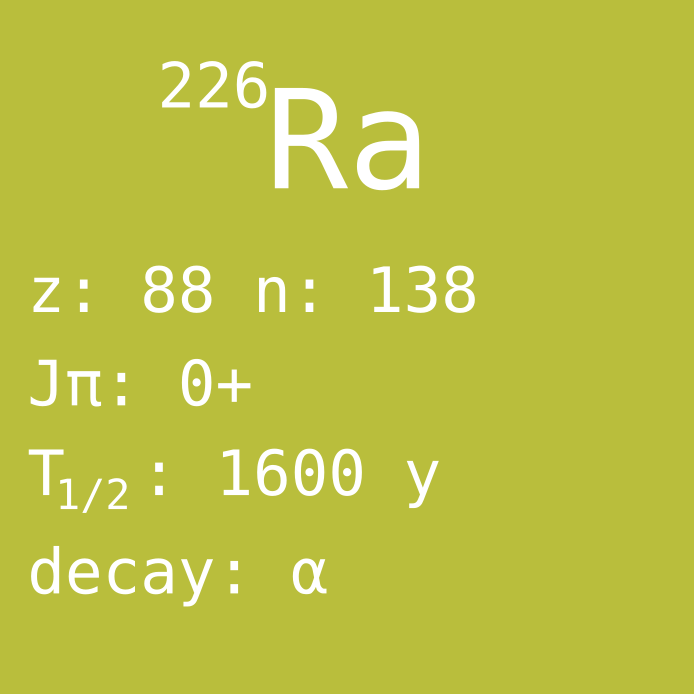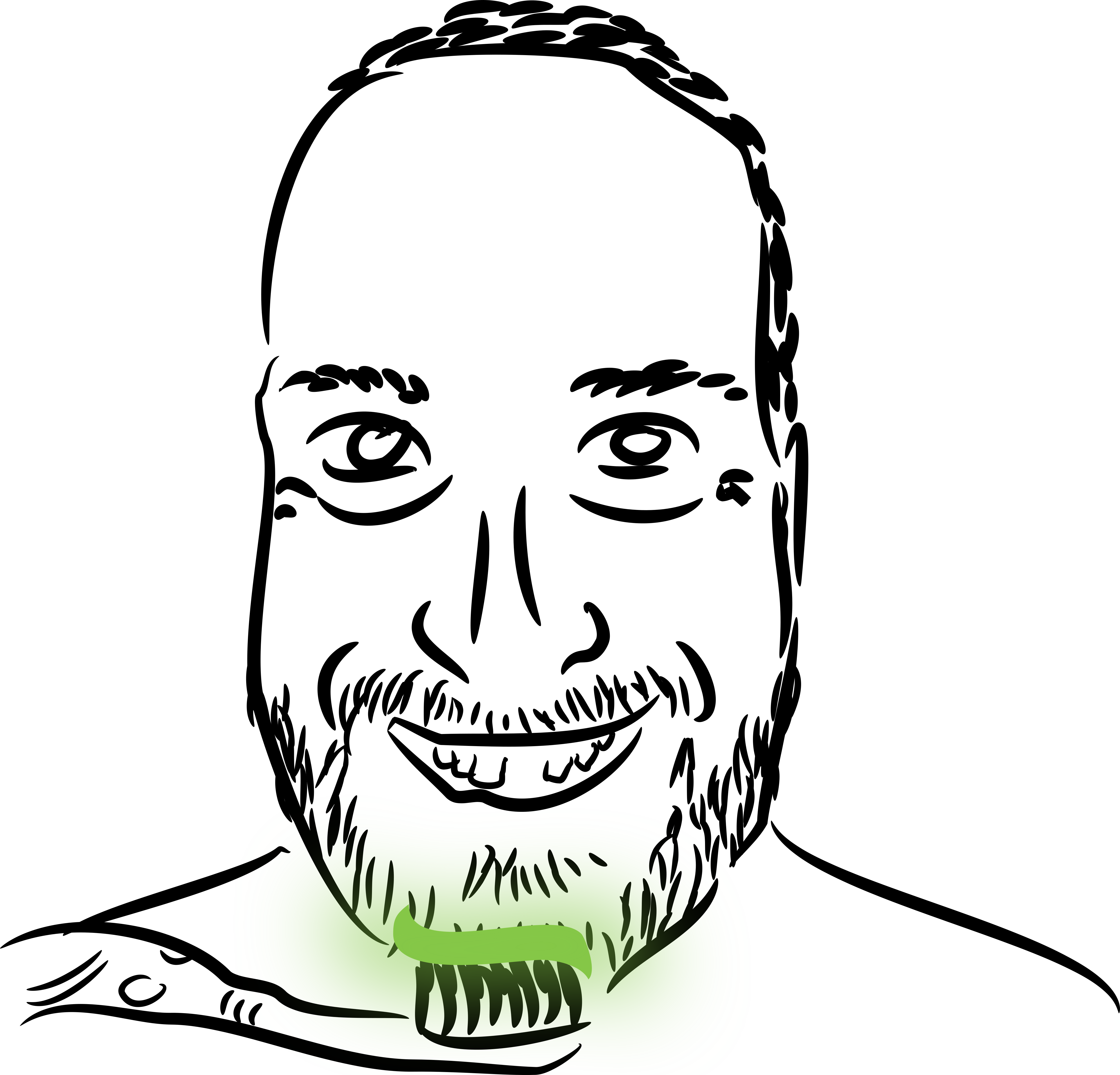

Radium-226 with 88 protons and 138 neutrons is one of the most famous radioactive substances. Radioactive radium exists in trace concentrations in nature, since it is a part of the uranium decay series, and it is one of the first radioactive elements discovered. First out was uranium, which was discovered by Henri Becquerel to emit energetic invisible irradiation in 1896 (it can be noted that the element uranium was known before Becquerel).
Later, Marie Curie and her husband Pierre also started to study radioactivity, and they made several advancements, for example they found that thorium was also radioactive. Other than that, at first they didn’t find other elements in the periodic table that were radioactive, but this changed when they investigated the radioactivity from the ore that the uranium came from, and found that it was much more radioactive than what the uranium would explain on its own. So Marie Curie correctly concluded that new elements must be created in the uranium ore, that are themselves radioactive. After chemically separating the various elements in the ore, she found new elements, previously unknown, that were much more radioactive than the uranium it came from. Among these were radium.
It must have been quite a mystery, the radiation emanating from these elements. After all, a very solid hypothesis in physics is that energy is conserved, this is called the law of energy conservation. So if a material is spontaneously emitting energy, where does this energy come from? Well, it was later found that the mass of the matter is reduced by a small amount in the decay process, and that mass and energy are equivalent.
Radium soon found use as a radiation source, since it was much stronger than uranium or thorium (One must note here that the strength of a source depends on two things: the quantity of it, and the half-life of it. The more material we have the more radiation it emits, and the shorter the half-life we have, the more radiation it emits in unit time. This is the reason that 1 kilo of radium is a stronger source than 1 kilo of uranium), and still long-lived enough to remain practically without diminishing in strength, with a half-life of 1600 years. It came to be used in medicine, for treating cancer, and also in radioluminescent paints, which gives off light powered by the decaying nuclide. This was often used on radium watch dials. Around the 1920s radium was even used in sun creams, toothpaste and makeup.
The risks involved with strong radiation sources were not known in the dawn of nuclear physics, and this led to Marie and Pierre Curie receiving high radiation doses, for example from carrying around the radium in their pockets, and this is also believed to have eventually caused the death of Marie Curie (Pierre on the other hand died young in a traffic accident). Also factory workers, called radium girls, who painted the radioluminescent paint on the watches, were suffering from radiation caused illnesses. They were instructed to point the brushes with their lips, which was at that time against better knowledge of the supervisors.
Nowadays, radium-226 is not much used. Remember that radium only exists in trace concentrations in uranium ore, and therefore it is a very laborious task to separate significant amounts of it. With the variety of artificial radioisotopes now available, there have come more practical options for most applications.

© 2020 Zs. Elter, P. Andersson and A. Al-Adili